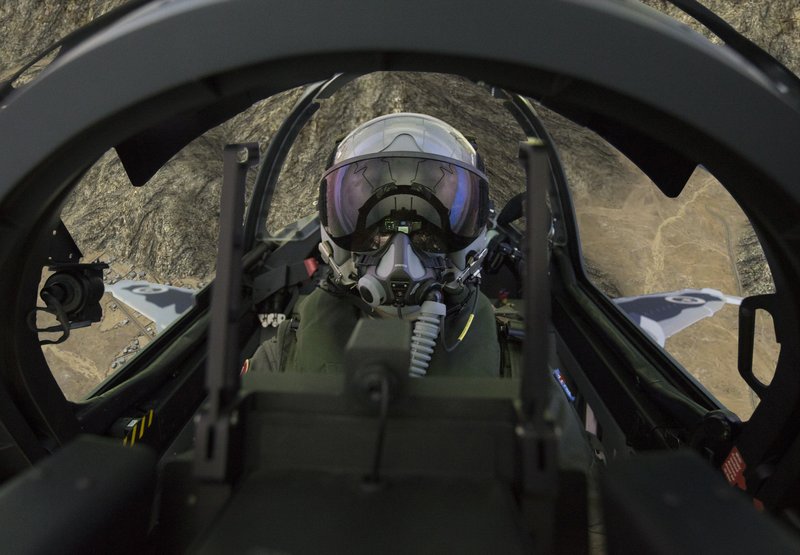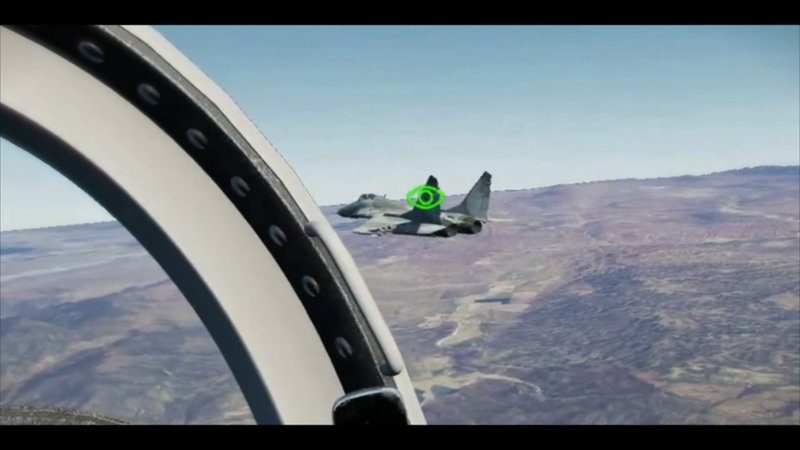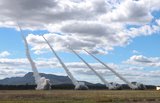Advancing Defense Readiness: The Strategic Edge of Simulation Training
This article is brought to you by CAE.
Simulation has been a critical part of flight training for over nine decades. Developing along with the aircraft platforms, the broad spectrum of simulation training solutions enables force readiness in an environment plagued with near-peer threats, security risks, and limited budgets.
In 1931, high crash and fatality rates of early wood and canvas aircraft led to the development of the “Pilot Maker,” later named the ‘Blue Box.’ Early aviation pioneers, as well as over 500,000 World War II aviators from around the globe, used the Link Model C-3 simulator to learn and refine skills in basic flight and more advanced instrument flight.
As aircraft have become more capable and sophisticated, flight simulation has advanced to span a continuum of training capability, from basic mobile or desktop computer applications to full crew, six-degrees-of-freedom full flight simulator (FFS) systems. Flight simulators help aviators acquire the critical knowledge, skills, and behaviors they will need in actual flight, and enable pilots to practice and build critical skills safely in an immersive, cybersecure environment.
“If you are looking for perfect safety, you will do well to sit on a fence and watch the birds; but if you really wish to learn, you must mount a machine and become acquainted with its tricks by actual trial.”— Wilbur Wright
Simulation training allows for trial, risk, and repetition in the safety of a virtual environment, which brings significant benefits to the student and maximizes live flight training. Organizations that understand these advantages amplify effectiveness in readying safe, competent aviators.

Training Efficiency
Simulation creates a controlled learning environment for students, resulting in a more efficient learning experience per training hour. Interference from other aircraft, weather phenomena, terrain, or even threats are controlled for specific effects. Instructors manage the events' tempo, pace, and cadence to adapt the crew’s experiences. Events can be paused or reset, at will, to show key markers or cues pilots must learn to acquire to master essential skills.
Simulator availability is significantly higher than actual aircraft and not prone to weather cancellation or airspace restrictions, allowing simulation to multiply student throughput compared to live flight.
Training Effectiveness
Simulators provide an ideal structure for repeating foundational cognitive tasks. In some cases, simulation offers a superior learning experience to actual hands-on training with real equipment. Synthetic environments enable students to view and interact with things not physically possible in the real world, like the internal workings of a jet engine in operation or the airflow over a rotor system.
Simulators linked together in a vast virtual network, with collective control of air, sea, land, space, and cyber effects, enable joint domain training, large force exercises, and critical mission rehearsal. Live, Virtual, and Constructive (LVC) training, enabled through complex common architectures such as the U.S. Air Force’s Simulator Common Architecture Requirements Standards, or SCARS, has created new training capabilities for individual, team, joint, and allied forces at scale.
As battle spaces become more integrated and more joint, air forces seeking advantage in complex, multi-domain environments require the ability to train with cohesive cyber, electronic warfare, and space effects. Synthetic environments create a stable platform to organize, experiment, validate, and build Tactics, Techniques, and Procedures (TTPs) by introducing adversary forces at scale with levels of realism and effect that would be prohibitively expensive or difficult to field using live means.
Safety
Using flight simulators, crews engage in training activities they would not otherwise be able to accomplish in live flight without significant risk to themselves, their equipment, or others on the ground. Many emergency procedures can only be safely performed in a simulator. The European Union Aviation Safety Agency notes, “A trainee can make mistakes and errors and learn from them, perform and repeat normal and abnormal procedures, which may not be appropriate or safe when performed in [an aircraft].”
This was highlighted by the crew of a USMC KC-130J, which survived a mid-air collision during a flight over California in 2020. During a subsequent interview, copilot Maj. Cory T. Jones noted, “You do these compound emergencies in simulation. It is great training. You have to replicate handling a lot of stuff at once, even though, relatively, it doesn’t normally happen.”

Learning Control
The simulator’s ability to stop mid-event allows students to identify issues or concerns more quickly and reflect on them in near real-time. This provides an optimized environment for knowledge assimilation and gathering experience in core aviation tasks. Non-technical skills training can also be introduced and rehearsed to a high-performance level through simulation. This includes Crew or Cockpit Resource Management, collaboration, communications, leadership, decision-making, and critical thinking through the full range of aircrew experience levels, from novice to expert.
Operational Security
Many fifth- and sixth-generation combat aircraft's tactics, techniques, and procedures can only be fully exercised through simulation to control their exposure and preserve their tactical and strategic advantages. Classified simulator networks provide a secure setting to rehearse and integrate their TTPs. Secure, integrated digital simulation networks can also support joint training for allied and coalition forces while preserving their sovereign capabilities.
Cost
Modern combat aircraft are staggeringly expensive to operate. Full-motion, Level D simulators operate at as little as one thousand dollars per hour. Training exercises cost time, workforce, resources, fuel, and maintenance. The same event done in a virtual network is a fraction of the cost with comparable learning fidelity and benefit. Wear and tear on operational equipment is also reduced, and the exercise can be repeated at a higher rate and lower cost.
The strategic advancement of defense readiness leveraging simulation training is fundamental to maintaining resilient and capable defense forces. By embracing innovation, personnel are better prepared, more adaptable, and equipped with the skills necessary to navigate the complex and evolving environment.
More from Industry Spotlights
-
![The power of partnership: GDMS–UK deepens cooperation with the British Army]()
The power of partnership: GDMS–UK deepens cooperation with the British Army
In Conversation: Shephard's Gerrard Cowan talks to General Dynamics Mission Systems–United Kingdom’s Chris Burrows about how the company's UK TacCIS business is reshaping battlefield communications through sustained customer engagement, accelerated innovation and ecosystem collaboration.
-
![Expanded focus – unleashing the potential of commercial SATCOM for defence]()
Expanded focus – unleashing the potential of commercial SATCOM for defence
In conversation... Intelsat's Ray Lindenmayer talks to Shephard's Gerrard Cowan about the new capabilities advanced commercial SATCOM technologies can provide for military customers, and how industry and government can best work together to achieve maximum effect in orbit.
-
![Enhancing education: How CAE is embracing new technology to boost military training]()
Enhancing education: How CAE is embracing new technology to boost military training
In Conversation... Shephard's Gerrard Cowan talks to CAE's Marc-Olivier Sabourin about how the training and simulation industry can help militaries achieve essential levels of readiness by leveraging new technology, innovative procurement methods and a truly collaborative approach.
-
![Why tactical UAVs are winning on the future battlefield (Podcast)]()
Why tactical UAVs are winning on the future battlefield (Podcast)
In Conversation: In this special edition of the Shephard Defence Podcast, Tony Skinner sits down with Dan Slasky, President and CEO of Aeronautics, to explore how cutting-edge tactical unmanned aerial systems are reshaping today’s battlefields.
-
![Fincantieri’s Vulcano Class: a new era of versatility and innovation in naval operations]()
Fincantieri’s Vulcano Class: a new era of versatility and innovation in naval operations
Logistic support ships (LSS) are essential for sustained naval operations, especially during extended deployments far from home ports.
-
![Need more flexibility in battle management system delivery?]()
Need more flexibility in battle management system delivery?
Systematic’s newest solution, SitaWare BattleCloud, brings greater flexibility to combat information systems and C4ISR.



























